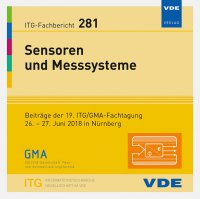Double entry method for the verification of data a chromatography data system receives
Konferenz: Sensoren und Messsysteme - 19. ITG/GMA-Fachtagung
26.06.2018 - 27.06.2018 in Nürnberg, Deutschland
Tagungsband: Sensoren und Messsysteme
Seiten: 4Sprache: EnglischTyp: PDF
Persönliche VDE-Mitglieder erhalten auf diesen Artikel 10% Rabatt
Autoren:
Marehn, David Thomas (AnaTox GmbH & Co. KG, Fürstenwalde, Germany & TUAS Wildau, High Performance Computing in Life Sciences, Wildau, Germany & Università degli Studi di Roma "Tor Vergata", Rome, Italy)
Wilhelm, Detlef (AnaTox GmbH & Co. KG, Fürstenwalde, Germany)
Pospisil, Heike (TUAS Wildau, High Performance Computing in Life Sciences, Wildau, Germany)
Pizzoferrato, Roberto (Università degli Studi di Roma "Tor Vergata", Rome, Italy)
Inhalt:
The importance of software validation increases since the need for a high usability and suitability of software applications grows. In order to reduce costs and manage risk factors more and more recommendations up to rules have been established. In the field of pharmacy the vendors of so called chromatography data systems (CDS) had to implement the guidelines of the Code of Federal Regulations Title 21 (CFR 21) during the last years in order to fulfill the increasing requirements. The CFR 21 part 11 deals with electronic records and signatures. This part is binding for each company in the regulated environment that will create, edit and sign electronic information instead of printing them on paper. The subsection CFR 21 part 11.10(h) explains how to perform an input check but it is very focused on the manual entry of data by the user. In this article we like to present a method in order to extend the input check to the data that will be provided by the hardware instrument and received by the CDS. A software tool has been written which allowes to communicate with a HPLC detector and acquire data from it. The communication is completely independent from a CDS which is started separately and connected to the same system. Using this configuration we made a parallel data acquisition of two instances at the same time possible. Two CDSs have been tested and for at least one of them it has been shown that a comparison of the acquired data can be done as like as the double entry method for the data verification. Same would be applicable for the second CDS after a few modifications. The given approach could be either used for a live data verification of produced raw data or as a single test during a software operational qualification to verify the data acquisition functionality of the software.


